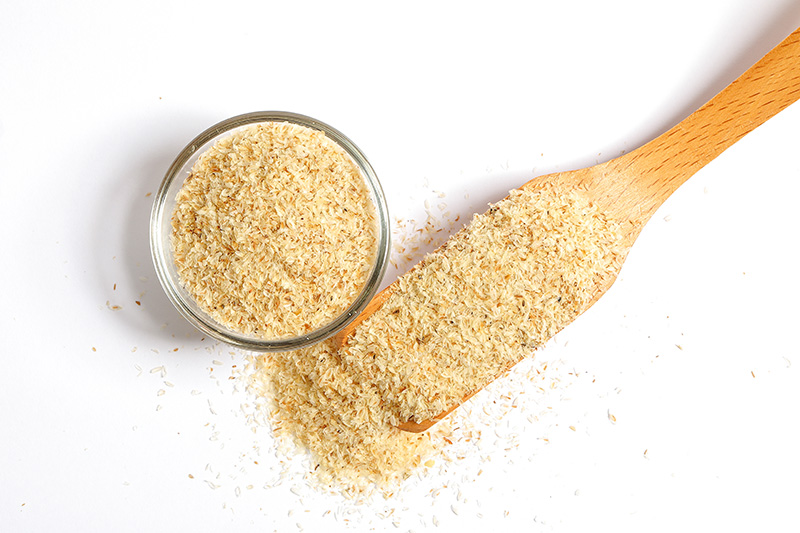
Dietary fiber is a critical component in managing gastrointestinal (GI) health and disease in companion animals, as well as removal of toxins. It consists of soluble fiber (which dissolves in water and is fermentable) and insoluble fiber (which remains intact during digestion). Both types of fiber offer unique benefits and limitations depending on the condition being treated, making fiber a valuable tool in veterinary care.
Fiber In Health
Fiber In Health
Dietary fiber promotes a healthy gut by supporting beneficial microbiota, improving stool consistency, and regulating motility.
Soluble fiber dissolves in water to form a gel-like substance in the gut. It is often fermentable by gut bacteria, leading to the production of short-chain fatty acids (SCFAs), such as butyrate, which nourish colonic cells and support gut health.
Insoluble fiber does not dissolve in water and remains largely intact as it moves through the GI tract. It increases stool bulk and speeds up intestinal transit and prevents constipation. Together, soluble and insoluble fiber enhances digestion, strengthens the gut barrier, and maintains balance.
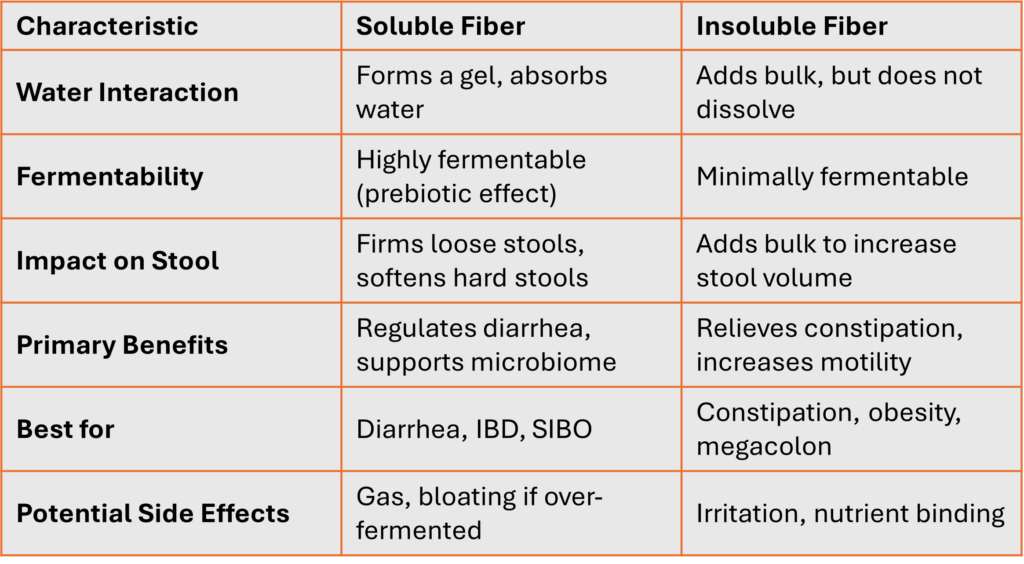
Fiber In Disease
Fiber In Disease
Dietary fiber plays a crucial role in managing gastrointestinal (GI) diseases in companion animals by modulating motility, supporting gut microbiota, and improving stool consistency.
Soluble fiber, like psyllium and pumpkin, absorbs excess water, forms gel-like stools, and reduces inflammation, making it ideal for diarrhea, inflammatory bowel disease (IBD), and small intestinal bacterial overgrowth (SIBO). It also produces short-chain fatty acids (SCFAs), which nourish intestinal cells and strengthen the gut barrier.
Insoluble fiber, such as wheat bran or cellulose, adds bulk to stool and promotes motility, making it effective for constipation and obesity. Tailoring fiber type ensures optimal management of specific GI disorders.
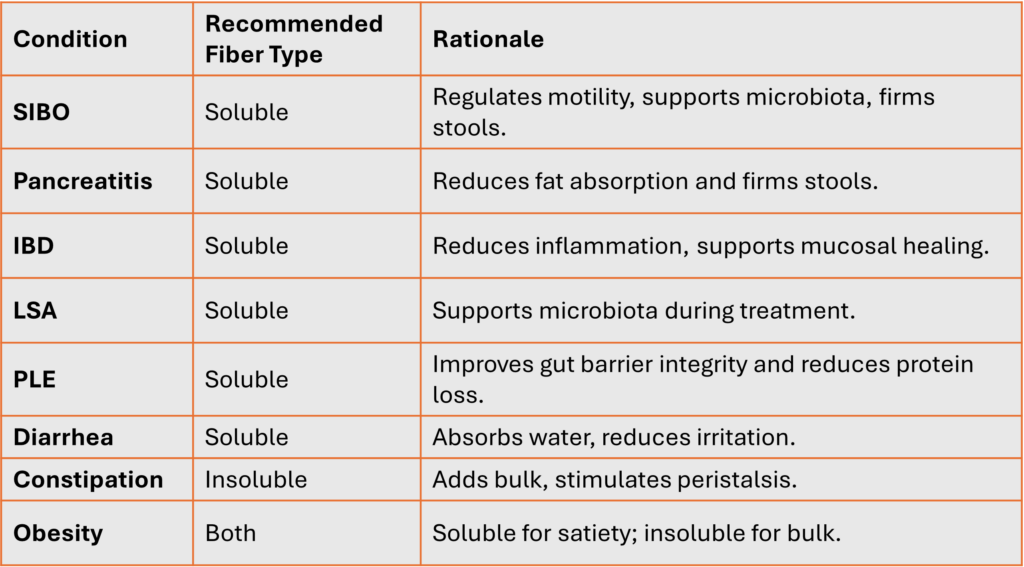
Fiber in Toxin Removal
Fiber in Toxin Removal
Dietary fiber plays a crucial role in binding and eliminating mycotoxins from the body, reducing their absorption and toxic effects. Certain fibers, including modified citrus pectin and β-glucans from yeast, have been shown to directly bind aflatoxins and ochratoxins, reducing their bioavailability. Fiber also supports liver and kidney function by reducing enterohepatic recirculation of toxins, ensuring they are excreted rather than reabsorbed.
Soluble fiber can encapsulate mycotoxins and enhance their removal. Additionally, soluble fiber promotes the growth of beneficial gut bacteria, such as Lactobacillus and Bifidobacterium, which can enzymatically degrade certain mycotoxins, further aiding detoxification.
Insoluble fiber can physically trap mycotoxins in the digestive tract, preventing them from entering the bloodstream. By increasing stool bulk and accelerating intestinal transit time, insoluble fiber minimizes the duration of mycotoxin exposure to the gut lining, reducing systemic toxicity.
By incorporating fiber-rich foods or fiber supplements into a pet’s diet, mycotoxin exposure can be mitigated, improving gastrointestinal health and overall toxin clearance while providing additional benefits such as enhanced immune function and gut barrier integrity.
Dietary Sources of Fiber
Dietary Sources of Fiber
Pet parents have a range of choices for their pet food – from common dry commercial food to organic, home prepared fresh food. Dry commercial foods rely on extensively processed fiber additives like cellulose and beet pulp, which are effective but not whole-food based. Fresh food diets typically use whole, natural ingredients with minimal processing like fresh fruits and vegetables, providing additional nutrients and antioxidants along with fiber.
Here are some common sources of Soluble and Insoluble Fiber:
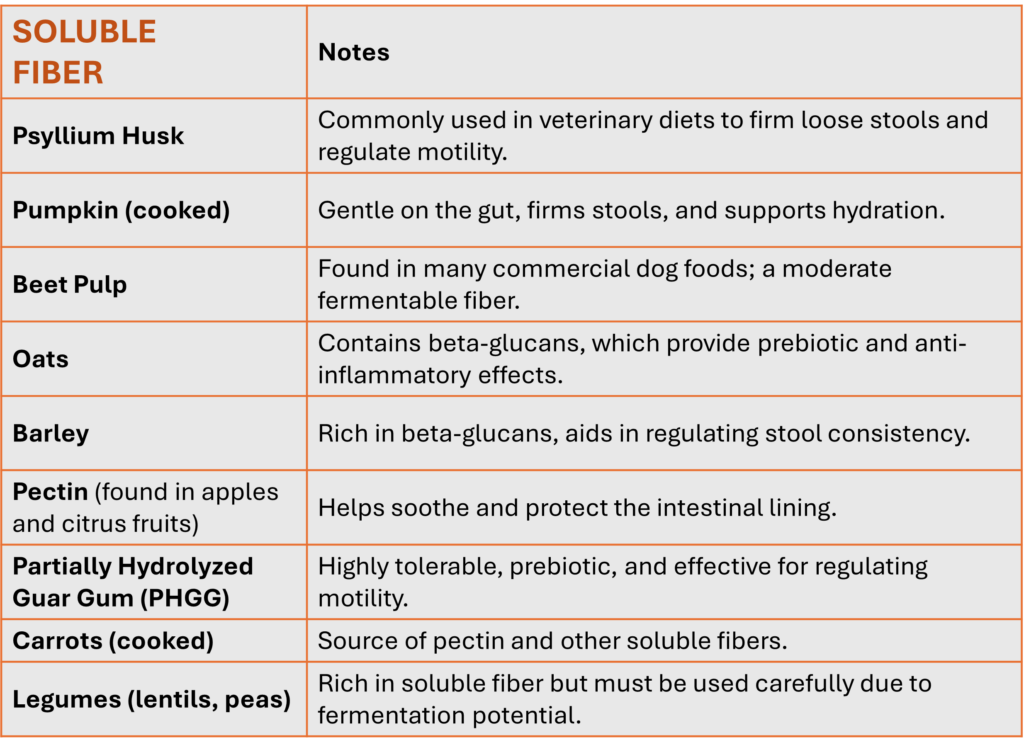
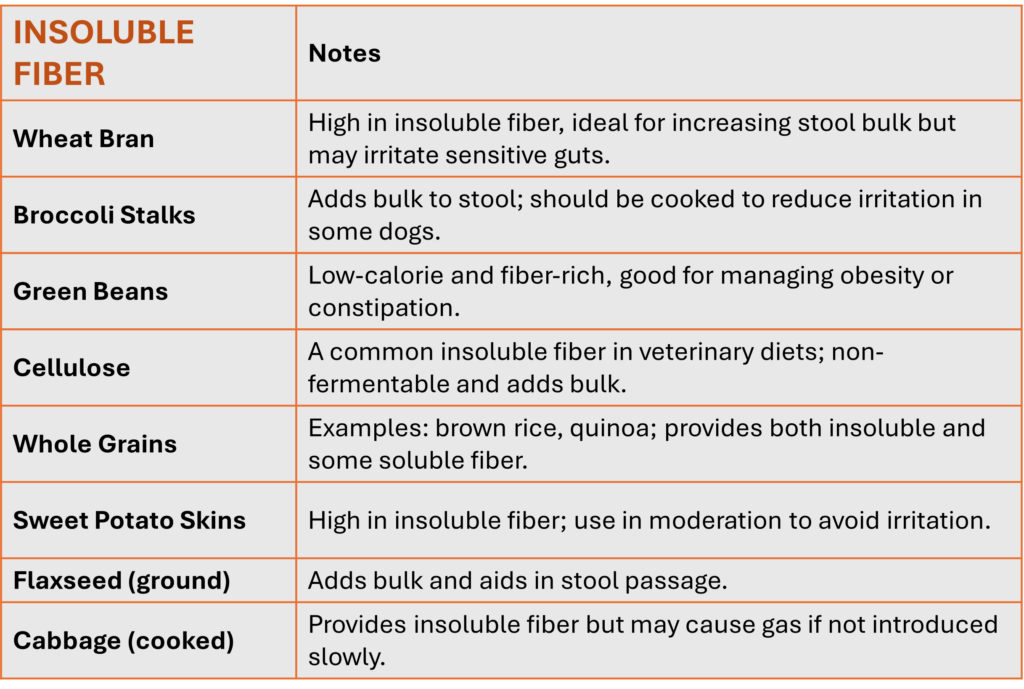
Patient with GI signs or toxin exposure?
Here are some relevant testing options:
16 Parameters for determining GI disease in cats or dogs.
Determine if there is accumulation of glyphosate in cats and dogs.
16 Mycotoxins
from 5 groups
If environment is contaminated, there may be metal accumulation.
